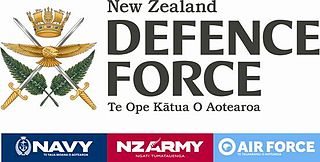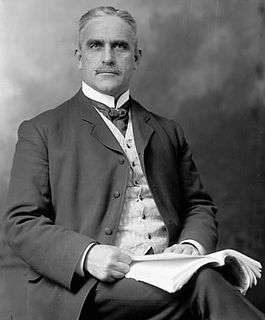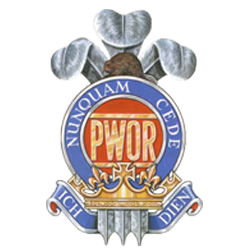This is a list of the Prime Ministers of Canada and their military service

Military service is service by an individual or group in an army or other militia, whether as a chosen job (volunteer) or as a result of an involuntary draft (conscription).
The Prime Minister is not Commander-in-Chief of the Canadian Forces, rather the role is held by the Queen of Canada and is held on behalf of the monarch by the Governor General of Canada.

The Governor General of Canada is the federal viceregal representative of the Canadian monarch, currently Queen Elizabeth II. The person of the sovereign is shared equally both with the 15 other Commonwealth realms and the 10 provinces of Canada, but resides predominantly in her oldest and most populous realm, the United Kingdom. The Queen, on the advice of her Canadian prime minister, appoints a governor general to carry out most of her constitutional and ceremonial duties. The commission is for an unfixed period of time—known as serving at Her Majesty's pleasure—though five years is the normal convention. Beginning in 1959, it has also been traditional to rotate between anglophone and francophone officeholders—although many recent governors general have been bilingual. Once in office, the governor general maintains direct contact with the Queen, wherever she may be at the time.
| Prime Minister | Service | Rank | Active Service |
|---|---|---|---|
| Sir John A. Macdonald | Sedentary Militia | Private | Kingston during Upper Canada Rebellion 1837; Minister of Militia and Defence 1860-1867 |
| Alexander Mackenzie | Canadian Militia | Major | None; member of militia in Lambton, Ontario (1866–1874) |
| Sir John Joseph Caldwell Abbott | Canadian Militia | commanding officer (Lieutenant Colonel?) | None; officer of 11th Argenteuil Battalion militia in Montreal area (1866-1874?) |
| Sir John Sparrow David Thompson | none | none | none |
| Sir Mackenzie Bowell | Canadian Militia | Lieutenant Colonel | Canadian militia posted along the border during the American Civil War; member of 49th (Hastings) Battalion of Rifles militia unit in North Hastings, Ontario (1867–1872); Minister of Militia and Defence 1892 and 1896 (acting) |
| Sir Charles Tupper | none | none | none |
| Sir Wilfrid Laurier | none | none | none |
| Sir Robert Laird Borden | none | none | none |
| Arthur Meighen | none | none | none |
| William Lyon Mackenzie King | none | none | none |
| Richard Bedford Bennett | none | none | none |
| Louis St. Laurent | none | none | none |
| John Diefenbaker | Canadian Expeditionary Force (Permanent Active Militia) | Lieutenant | Served during World War I (1916–1917) in Britain as member of 196th Battalion (Western Universities), CEF |
| Lester Bowles Pearson | Canadian Expeditionary Force (Permanent Active Militia) | Lieutenant | Served during World War I in Greece and Egypt as member of Canadian Army Medical Corps and later in the Royal Flying Corps as Pilot (1915–1918) in Britain |
| Pierre Trudeau | Canadian Army Home Service / Canadian Army Reserve | Officer cadet | None; Served in Canadian Officers' Training Corps from 1943 to 1945 in Montreal during World War II, but never deployed overseas |
| Joe Clark | none | none | none |
| John Turner | none | none | none |
| Brian Mulroney | none | none | none |
| Kim Campbell | none | none | none; Minister of National Defence 1993 |
| Jean Chrétien | none | none | none |
| Paul Martin | none | none | none |
| Stephen Harper | none | none | none |
| Justin Trudeau | none | none | none |
Only seven Prime Ministers have served in the military:
- Four Prime Ministers served in volunteer militia units (see Canadian Militia) attached to the British Army in Canada in later part of the 19th century
- One Prime Minister (Trudeau) was a cadet (not a full member) of the volunteer Canadian Army during World War II
- Only Diefenbaker and Pearson served as officers and overseas (during World War I)
- Seven Prime Ministers were members of the Army (none in the Navy or Air Force)
- One Prime Minister (Pearson) served in a non-Canadian military unit, the Royal Flying Corps (later RAF) during World War I
The Canadian Militia is a traditional title given to militia units raised from local communities for the defence of Canada. The term has been used to describe colonial militias raised in Canada, as well as its regular army from 1855 to 1940.

The British Army is the principal land warfare force of the United Kingdom, a part of British Armed Forces. As of 2018, the British Army comprises just over 81,500 trained regular (full-time) personnel and just over 27,000 trained reserve (part-time) personnel.

Canada is a country in the northern part of North America. Its ten provinces and three territories extend from the Atlantic to the Pacific and northward into the Arctic Ocean, covering 9.98 million square kilometres, making it the world's second-largest country by total area. Canada's southern border with the United States is the world's longest bi-national land border. Its capital is Ottawa, and its three largest metropolitan areas are Toronto, Montreal, and Vancouver. As a whole, Canada is sparsely populated, the majority of its land area being dominated by forest and tundra. Consequently, its population is highly urbanized, with over 80 percent of its inhabitants concentrated in large and medium-sized cities, many near the southern border. Canada's climate varies widely across its vast area, ranging from arctic weather in the north, to hot summers in the southern regions, with four distinct seasons.
Two Prime Ministers have been Minister of Militia and Defence (Macdonald and Bowell) and one as Minister of National Defence (Campbell).










